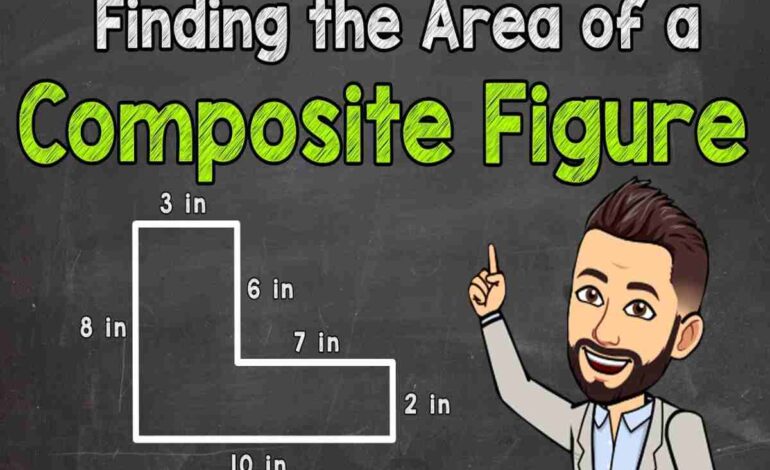How Can You Decompose the Composite Figure to Determine Its Area?

Ever stared at a weirdly shaped figure and thought, “How in the world do I find the area of this thing?” That’s exactly where decomposing composite figures comes in. So, if you’ve been wondering, “how can you decompose the composite figure to determine its area?” — you’re in the right place!
Let’s break it down step by step (in the most pain-free way possible).
What Is a Composite Figure?
A composite figure (also called a composite shape) is just a shape that’s made up of two or more basic shapes—like rectangles, triangles, circles, or semicircles—all glued together into one big, awkward-looking figure.
Think of it like LEGO: you’ve got simple blocks (basic shapes), and when you put them together, you get something complex (composite shape).
So, How Can You Decompose the Composite Figure to Determine Its Area?
Here’s the golden rule:
Break the composite figure into basic shapes you already know how to calculate the area for.
Yep, that’s it. Here’s how to actually do it
Step-by-Step: How to Decompose and Calculate Area
Step 1: Look for Familiar Shapes
Scan the figure for basic 2D shapes like:
- Rectangles
- Squares
- Triangles
- Trapezoids
- Circles or semicircles
You may need to draw imaginary lines to split the shape up.
Step 2: Outline or Label Each Sub-Shape
Use letters or colors to label each piece:
- Label one part “A” (maybe a rectangle)
- Label another part “B” (like a triangle)
- Keep going until the whole figure is broken down
This will help you stay organized when calculating.
Step 3: Use Area Formulas You Already Know
| Shape | Area Formula |
| Rectangle/Square | A = length × width |
| Triangle | A = ½ × base × height |
| Circle | A = π × r² |
| Semicircle | A = ½ × π × r² |
| Trapezoid | A = ½ × (base1 + base2) × height |
Step 4: Calculate the Area of Each Part
Plug in the measurements (given in the diagram or word problem).
Don’t forget units! Keep your answers consistent (e.g., cm² or in²).
Step 5: Add (or Subtract) the Areas
- Add the areas together to get the total if all the shapes are inside the figure.
- Subtract areas if part of the shape is “cut out” (like a hole or gap).
Real Example: Let’s Do One Together
Imagine a composite figure made of:
- A rectangle (10 cm by 4 cm)
- A right triangle on top (base 10 cm, height 3 cm)
Step 1: Rectangle Area = 10 × 4 = 40 cm²
Step 2: Triangle Area = ½ × 10 × 3 = 15 cm²
Total Area = 40 + 15 = 55 cm²
Boom. You just decomposed a composite figure and nailed the area.
Pro Tips for Decomposing Shapes
- Always check if measurements are missing — you might need to deduce them.
- Use graph paper or draw your own lines if you need a clearer view.
- Don’t double-count overlapping shapes!
- Label everything to avoid confusion.
Why This Matters (Especially for Students)
Decomposing composite figures shows up a LOT in:
- Middle & high school math (especially geometry)
- SAT/ACT and other standardized tests
- Real life — like flooring, gardening, or building
Understanding how to break down shapes is a super useful life skill.
FAQ: Decomposing Composite Figures
Q: What if the figure is irregular and doesn’t look like any shape?
Try rotating it or redrawing. Often it’s just a rectangle and triangle squished together.
Q: Can you use subtraction instead of addition?
Absolutely. If the shape has a missing part (like a hole or cutout), subtract that area.
Q: What’s the fastest way to find the area?
Practice helps! Once you can quickly recognize shapes, the math becomes second nature.
Final Answer: How Can You Decompose the Composite Figure to Determine Its Area?
To determine the area of a composite figure, simply break it down into smaller shapes, calculate each individual area using basic formulas, and then add or subtract them to find the total.
Once you understand that, even the most complicated figures become easy to handle.
